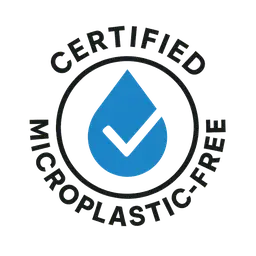
Why It Matters
Why a microplastic-free standard helps shoppers and brands.
What are microplastics?
Microplastics are tiny plastic particles less than 5 millimeters in size. Many are so small they can only be seen with a microscope. They can be created intentionally for use in products, or they can form when larger plastics shed or break down over time.
These particles have been detected in oceans, rivers, household dust, food, drinking water, and even in the human body. Scientific research is ongoing, but there is growing concern about their potential effects on both human health and the environment [Nature, 2022], [UNEP].
Common sources of microplastics in products include:
- Cosmetics and personal care products such as scrubs, glitter, and synthetic fillers
- Synthetic textiles that shed fibers during washing
- Plastic coatings on packaging that degrade over time
- Household items and materials that release small particles during normal use
Certified Microplastic-Free™ products either contain no intentionally added microplastics or have microplastic content below our strict, science-based threshold for safety. This threshold was developed in consultation with environmental scientists and is based on peer-reviewed research. While many certified products are completely free of microplastics, some may contain trace amounts that meet this safety standard.
Resources
For general background and ongoing research, see:
- World Health Organization: Microplastics in drinking-water
- NOAA: Microplastics overview
- UNEP: Beat Plastic Pollution
- National Geographic: Microplastics in the Environment
- CDC: Workplace Safety and Microplastics
These resources are independent of our program and are provided for education only.